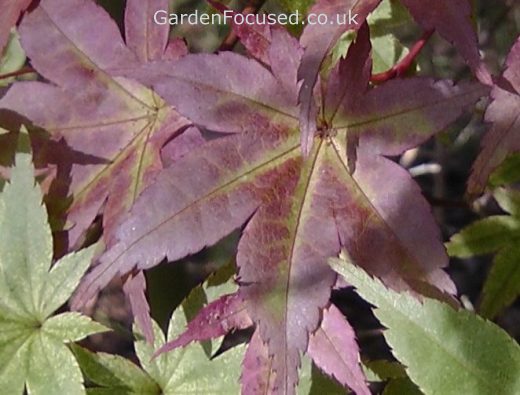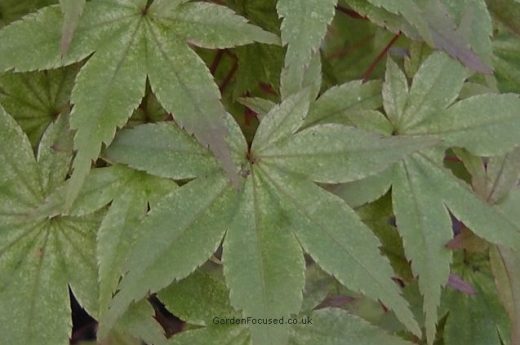JAPANESE MAPLE CORALLINUM
Acer palmatum 'Corallinum' is and ideal small tree for small medium and large gardens. It was introduced by Hilliers in 1910 and is still a rarity in gardens today. This is surprising because this Japanese maple provides excellent late spring and early summer colour something which few other maples do.
The late spring colour is a vibrant coral pink which turns to a green and pink during the summer months. In autumn the leaves turn a traditional Japanese Maple scarlet
Acer palmatum 'Corallinum' is a slow growing tree which reaches a maximum height of 3m / 10ft and a spread of around 4m / 13ft. It responds well to regular pruning and is ideal for growing in containers. We recommend this as an unusual Japanese Maple and note some suppliers at the end of this article. It does well in full sun for most of the day.
TECHNICAL DETAILS FOR ACER PALMATUM CORALLINUM
| Genus | Acer |
| Species | palmatum |
| Variety | ‘Corallinum’ |
| Light | Does well in part shade, tolerates sun well. |
| Hardy | Yes |
| Soil | Most, but best slightly acidic and well-drained |
| Height | 3m / 9ft after 20 years |
| Spread | 4m / 13ft after 20 years |
| Shape | A handsome dense tree with a rounded shape |
| Colour | Coral pink, then green / pink then scarlet. |
| Bonsai | No |
LEAF AND TREE FORM
The leaves are small to medium sized with five to seven well-defined lobes. Each lobe is slightly serrated. The stalks are pink throughout the year.
Pink in early spring, turning greener in mid summer and then a bright scarlet in autumn.
CULTIVATION OF ACER PALMATUM 'CORALLINUM'
POSITION
Acer japonicum 'Corallinum' prefers a slightly acidic soil which is well drained but not dry. Ideally they should be in a partial shade position but a full sun position in cooler areas is also ideal.
PRUNING
When the tree is approaching the size you require, prune annually after leaf fall in late November to very early January in UK weather conditions. Choose a dry day. Don't paint over the wounds, leave them to dry off naturally and quickly. A sharp and clean pair of secateurs is the ideal tool.
In older trees (five years and older) prune away some of this twiggy growth in the centre of the tree if it is becoming congested. This will allow good air circulation and help prevent fungal infections.
FEEDING AND WATERING
Avoid feeding this variety of Japanese Maple, it will be able to absorb sufficient nutrients on its own. Excessive nutrients in the soil cause soft growth which will be liable to frost damage in the winter.
In the first two years of its life water the tree if conditions become dry. After that only water if there is a significant drought. A mulch of well rotted compost or similar around the base of the tree will reduce water loss and maintain an even supply.
For more comprehensive details about caring for your Japanese Maple tree
click here.
SUPPLIERS
JUNKER’S NURSERY
Principally mail order only.
Phone 01823 480774 to visit (Taunton, Somerset) by appointment only.CHARLEHURST FARM NURSERY (visitors welcome but telephone before visiting)
Mail order or:
Loxwood Road,
Plaistow,
Billingshurst,
West Sussex.
RH14 0NY


